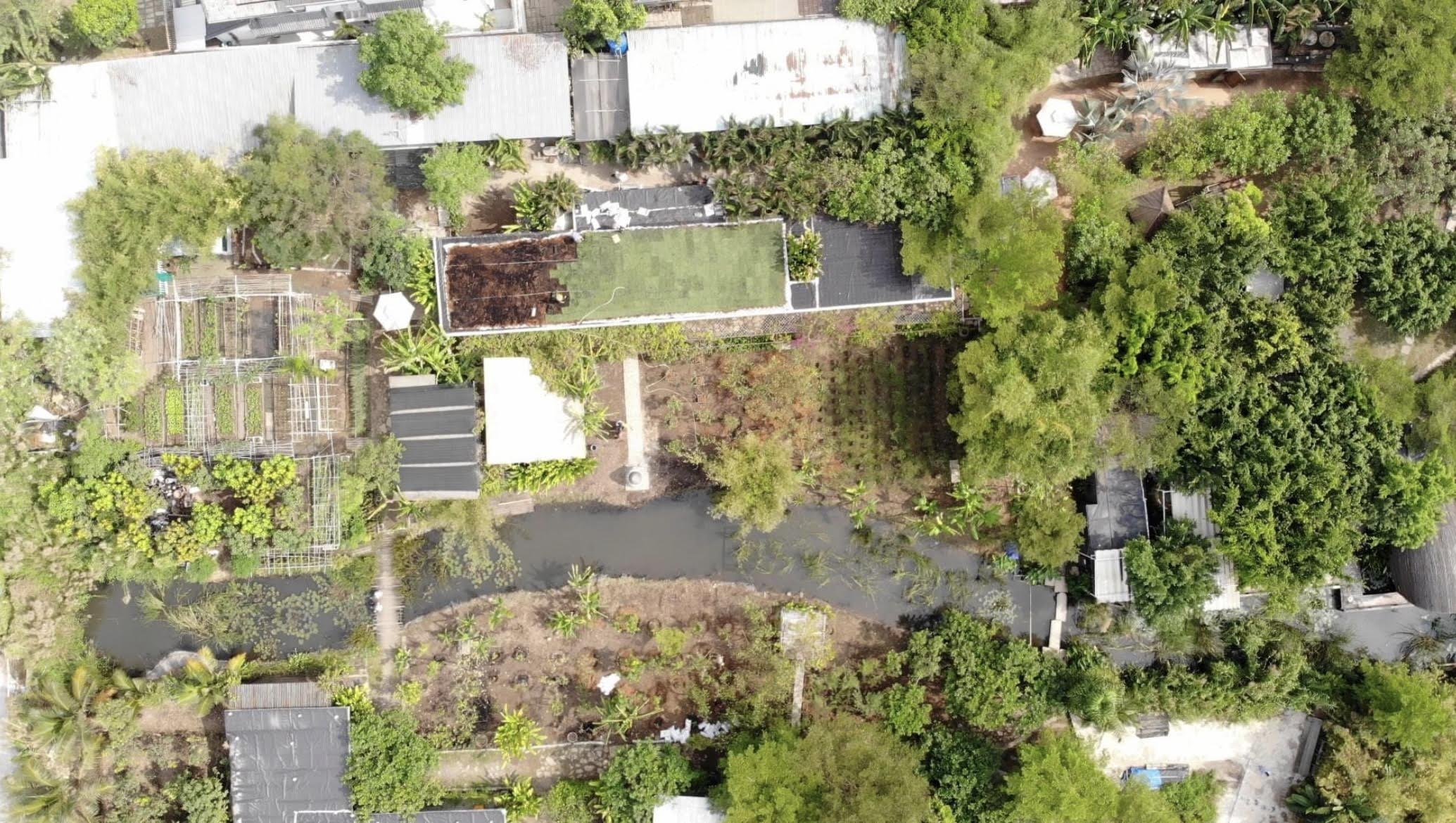The Vietnamese Kitchen Garden"Vườn Nhà"
In 2013, I moved my family to Vietnam, the third most populous country in Asia. This move led me to a profound shift in my philosophy towards sustainability. I fell in love with the culture, the food, and most of all, their love for gardening and holistic living. Living in the bustling city of Ho Chi Minh, I witnessed the abundance of greenery in every corner small gardens grown, which inspired me to change my approach to architecture. I decided that my architectural practice, Ellearchitecture, would no longer serve concrete but instead focus on holistic designapproch. This led me to start exploring alternative way to design like The permaculture.
Countries like Vietnam, where agriculture is deeply intertwined with the culture and cuisine, offer the perfect environment for permaculture design. This article aims to explore the Vietnamese kitchen garden, also known as "Vườn Nhà" in Vietnamese, and highlight the fragrant vegetables that are an essential part of the sustainable food culture in Vietnam.
The Vietnamese kitchen garden is an exquisite combination of ornamental and edible plants. Meticulously designed to utilize available space efficiently, it incorporates a wide range of traditional vegetables and herbs. Raised beds, hanging pots, and trellis structures are common features of these gardens, allowing gardeners to maximize yields even in limited spaces.
Vietnamese cuisine is famous for its aromatic dishes, and fragrant vegetables play a pivotal role in creating these flavors. Let's delve into some of the most prominent fragrant vegetables found in Vietnamese kitchen gardens.
1. Vietnamese Mint (Húng Quế): Also known as "polygonum odoratum" or "Rau Răm," Vietnamese mint is an essential herb in Vietnamese cooking. Its delicate leaves and unique flavor add depth and freshness to various dishes such as soups, salads, and stir-fries. In addition to its culinary uses, Vietnamese mint is known for its medicinal properties, particularly in aiding digestive health.
2. Lemongrass (Xả): Lemongrass, locally known as "Cỏ Sả," is a quintessential Vietnamese herb cherished for its citrusy aroma and refreshing taste. It is frequently used in marinades, broths, and curries, adding a zesty and vibrant touch to dishes. Apart from its flavor-enhancing properties, lemongrass possesses antibacterial and antifungal properties, making it a valuable addition to both culinary and medicinal fields.
3. Thai Basil (Húng Quế Tái Lẻ): Thai basil, also called "Húng Quế Tái Lẻ" or "Rau Quế," is an incredibly aromatic herb commonly found in Vietnamese kitchens. Its distinct anise-like flavor adds a unique complexity to dishes such as pho, stir-fries, and spring rolls. The presence of essential oils in Thai basil not only makes it flavorful but also invigorating and refreshing to the senses.
4. Vietnamese Coriander (Rau Răm): Vietnamese coriander, or "Rau Răm," plays a vital role in the flavor profile of many Vietnamese dishes. Its pungent, peppery, and slightly lemony taste complements soups, salads, and fish dishes exceptionally well. Additionally, Vietnamese coriander is believed to possess medicinal properties, aiding digestion and reducing inflammation.
In conclusion, the Vietnamese kitchen garden and its variety of fragrant vegetables exemplify the profound connection between food, culture, and sustainable gardening practices. These aromatic herbs not only contribute to the unique flavors in Vietnamese cuisine but also offer various health benefits. By embracing permaculture principles and cultivating fragrant Vietnamese vegetables, individuals can create their own sustainable food systems while honoring Vietnam's rich culinary heritage.

